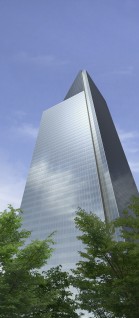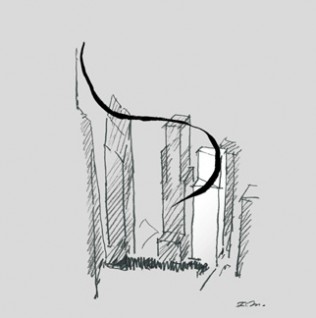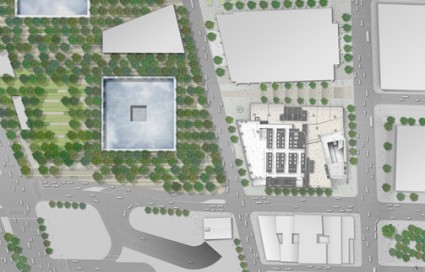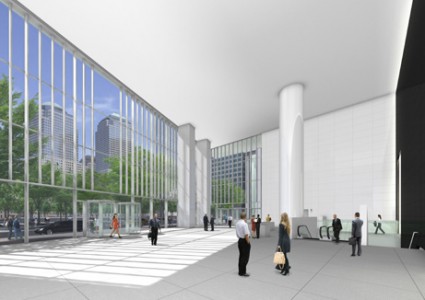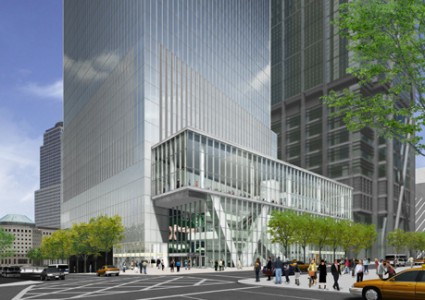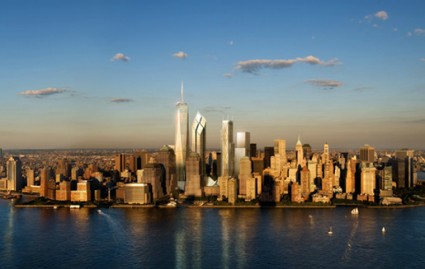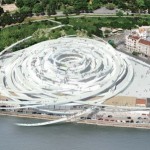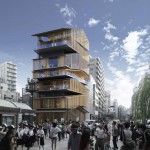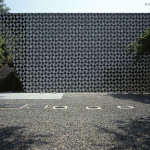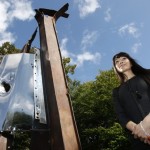Considering the political hoopla and horse-trading surrounding the construction of the World Trade Center site’s master plan, it’s astonishing that the memorial is actually opening on schedule today. Of the six towers that are part of the planned rebuilding, only two are currently visible: 1 World Trade Center (Freedom Tower) by David Childs (of SOM) and 4 World Trade Center, by Fumihiko Maki (who coincidentally was also previously employed at SOM).
Maki was educated in Tokyo but made his way to Harvard for his post-graduate work. Up until the early 1990s, Maki was predominantly commissioned in Japan before branching out into the U.S., Germany and then Asia. He is one of four Japanese to have received the prestigious Pritzker Prize (in 1993) and is also credited as being one of the founding fathers of the Metabolism Group, a Japanese post-war architectural movement characterized by “large scale, flexible, and expandable structures that evoked the processes of organic growth.”
Tower 4 is a minimalist structure that, when completed in 2013, will stand at 61 stories high, making it the 4th tallest in the new site. From the ground, visitors will be greeted by a bright, welcoming four-story lobby made of glass. However, when viewed from afar, it is easily the most nondescript of the group. Standing straight and tall with dignity, its one defining feature is a void, chiseled away at the top, producing a trapezoid crown. This, the architect argues, is a subtle yet vital part of the composition that helps create interaction between the other buildings that are part of the master plan.
Those who dismiss Tower 4 for being boring, are both right and wrong. They are right in their visual assessment that the structure is mundane and repetitious. But what they fail to realize is that so much of New York City is about the ordinary colliding with the monumental. Ten years ago, when 3000 lives disintegrated, the impact was undoubtedly felt across the world. If you lived in New York, the atrociousness was instantaneous. If you lived elsewhere (I happened to be in Washington DC at the time) it felt like science-fiction and reality slowly blending together. What’s obvious to anyone living in the city now is that we are not waiting on these towers to move on. New York has quietly picked up the shattered fragments of that infamous day and resumed what we are best at.


